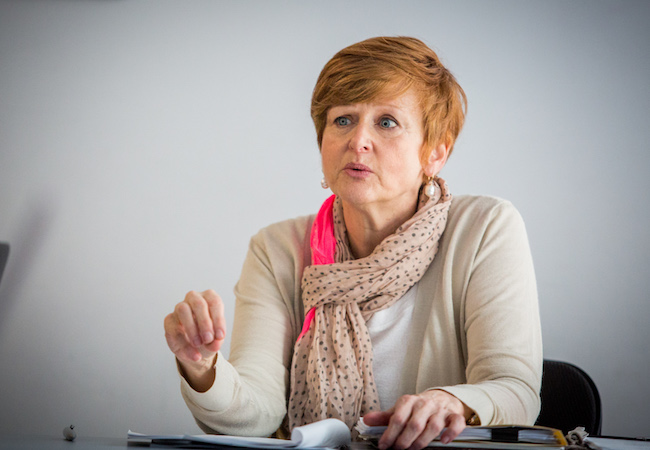Cal. higher ed hampered by outdated polices that limit opportunity, Penn GSE report finds

“California is not prepared for its future,” said Penn GSE higher education expert Joni Finney.
Jeff Frantz, Penn GSE Communications
frantzj@upenn.edu | 215-898-3269
*Note for TV and radio: The University of Pennsylvania has an on-campus ISDN line and ready access to a satellite uplink facility with live-shot capability.
DECEMBER 17, PHILADELPHIA — California’s 1960 Master Plan for Higher Education helped create a national model for how public colleges and universities could operate, and set California up for its success in the second half of the 20th century. However, the plan codified policies that had the effect of limiting the options for minority students, discouraging institutional collaboration, and ignoring modern workforce needs. Sixty years later, the realities of college, students, and financing have changed radically, but these limiting policies remain in place.
A new report from the Institute for Research on Higher Education at Penn GSE points to the faultlines shaping higher education policy in California and opportunity in the state.
- Read the report, “Faultlines” Shaping Higher Education Policy and Opportunities In California, here.
- Read the Executive Summary here
The report from Penn GSE’s Joni Finney; lead author Taylor K. Odle, a Penn GSE doctoral student; and a team of researchers, is based on primary and secondary data, including interviews with 16 policymakers, education policy leaders, and researchers inside and outside California. The authors define three major faultlines that result from California’s changing demographic, economic, geographic, political, and social contexts. These faultlines are:
- Persistent disparities by race, socioeconomic status, and geography that combine to sharply limit individual educational and economic opportunity for many within the state.
- Fragmentation, or lack of alignment and synchronicity in policy-related phenomenon and structures that comprise the statewide approach to postsecondary education.
- Volatility, or extreme variations and unpredictability in state and local funding for higher education, has impacts that extend into institutional resource allocation and family budgets.
“California is not prepared for its future,” said Finney, who has spent decades studying California’s higher education system and advising policymakers in the state. “Without substantive changes soon, the state will be left with an under-developed workforce and a pipeline that continues to exclude too many students.”
“California’s higher education system is an immense strategic asset that is being hampered by outdated policy frameworks that don't address changes in the state,” Odle said. “If leaders don’t find a sustained public steward for higher ed and address these faultlines, this asset becomes a liability that works against its public goals to provide educational opportunity and economic prosperity for all people.”
How can policymakers adapt higher education to fit the state’s needs? Finney and her team offer these recommendations:
- Prioritize reducing and eliminating gaps in performance related to race, socioeconomic status, and region. The authors argue that this goal should be the primary goal for policymakers and inform all policy decisions going forward.
- Establish regional education systems with regional governing bodies to improve educational opportunities and reduce disparities. As California has grown, regionalism has increased, but this is not reflected in higher education, where articulation and transfer agreements can be complex.
- Consider the public finance principles to guide a statewide strategy to reduce educational disparities. When considering changes to tax policy, rainy day funds, etc. policymakers must consider the impact on higher education.
- Establish a system of public accountability to monitor regional efforts to address educational disparities.
- Establish a statewide Blue Ribbon Commission representative of California’s stakeholders in higher education.
Establish a mechanism for long-term statewide stewardship of higher education that outlasts the term of any single governor or legislative session.
Through the report, the team of co-authors, including Melissa Bodnar, Elizabeth Dunens, Maya Kaul, Pooja R. Patel, and Lindsay Adams Van Ostenbridge, contribute detailed insights where California’s colleges and universities have succeeded and fallen short.
Penn GSE is one of the nation’s premier research education schools and is currently ranked #2 in the nation by U.S. News & World Report. No other education school enjoys a university environment as supportive of practical knowledge-building as the Ivy League’s University of Pennsylvania. The School is notably entrepreneurial, launching innovative degree programs for practicing professionals and unique partnerships with local educators, and the first-ever business plan competition devoted exclusively to educational products and programs.
The Institute for Research on Higher Education pursues action-oriented research to promote success in education and training beyond high school. IRHE’s research highlights urgent public policy issues facing states, the nation, and other countries.
